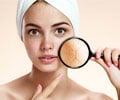What is Dry Skin?
Dry skin (xerosis) is a result of many factors. When the skin loses its natural oil barrier, individuals start feeling itchy in the dried areas of the skin. Redness, bleeding fissures, peeling or flaky skin, cracks, rough and shriveled skin are some of the different aspects of dry skin. Certain disease conditions result in severe dry skin or ichthyosis.
Most dry skin can be dealt with preventive measures, and appropriate use of oils, moisturizers, and diet. However, if the skin condition is severe and persists, one must seek the expert advice of a dermatologist.
Causes of Dry Skin
Some of the causes of dry skin are as follows:
Psoriasis: This condition is characterized by dead, dry cells forming a thick patch on the skin, causing itchiness.
Weather: Cold, dry weather or low-humidity weather dries out the skin. Children experience rashes on skin, in the spring and summer, due to poison ivy.
Atopic dermatitis: This is a type of eczema. The most commonly affected areas are the folds of knees, ankles, wrists, and elbows. The neck and face are the other areas affected by severe itchiness. Children show atopic dermatitis if there is a family history or if they are allergic. If the condition is severe, a dermatologist should be consulted.
Bathing frequently: Having a hot, steamy bath on a regular basis can strip the body of essential oils.
Hypothyroidism: Ineffective thyroid glands result in insufficient perspiration and inadequate release of body oils. This causes itchiness and dry skin.
Use of harsh soaps: Taking a shower with soap containing harsh chemicals or fragrance, irritates the skin and can aggravate dryness.
Ultraviolet rays: Exposure to the sun causes ultraviolet rays to penetrate the skin barrier, and break down elastin and collagen fibers. This results in the appearance of wrinkles and loose skin.
High blood glucose: People with diabetes have high levels of blood glucose, which reduces the fluid levels in the body and decrease perspiration. Hence, the skin’s moisture reduces and dryness increases. The most affected areas are the legs, feet, and elbows. Older people who have diabetes and high blood sugar are prone to dryness in skin.
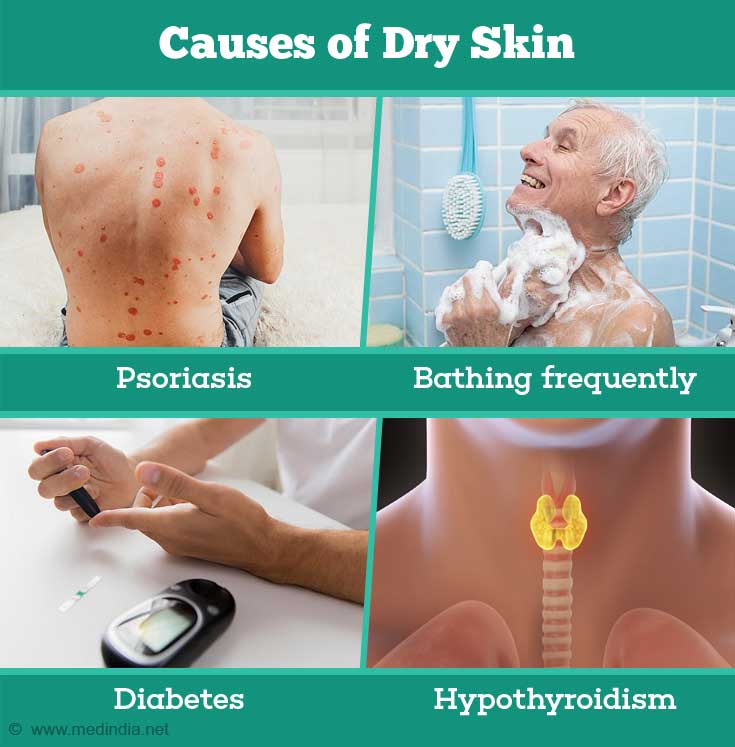
Risk Factors for Dry Skin
Some of the main risk factors for dry skin are:
- Living in cold or low-humidity countries
- Frequent showers
- Old age
How to Prevent Dry Skin?
1. Avoid hot water bath: Hot water removes body oils. One must take a shower with warm water rather than with hot water. Limiting bath time will also prevent the loss of essential body oils. This prevents the skin from becoming dry. Taking a shower for approximately 15 minutes is ideal. Apply a moisturizer to the body immediately after a shower.
2. Use moisturizing lotions: Use of cosmetics and lotions, with moisturizers, locks in the skin’s moisture. The moisturizer creates a layer over the skin, preventing the escape of moisture. Adding oil to bath water is also useful in creating a layer on the skin and trapping the moisture. Applying baby oil on the skin creates an effective barrier for the loss of the skin’s moisture.
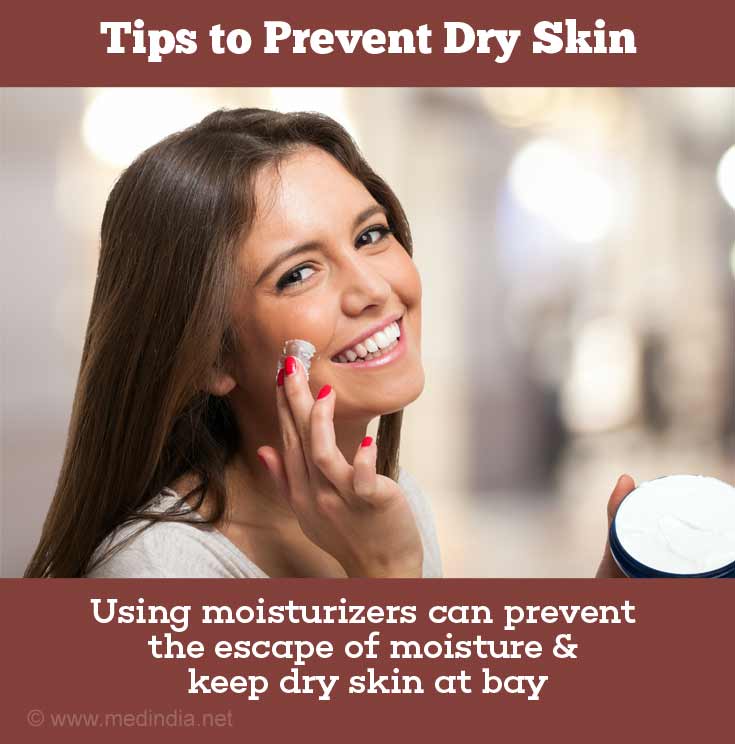
3. In children with mild dryness, fragrance-free moisturizers such as vaseline (petroleum jelly), shea butter should be used.
4. Use a humidifier: In cold countries, due to internal heating mechanisms, there is a loss of moisture from the skin. The skin turns dry and itchy. Such situations can be avoided by using a humidifier in the room, where the heater is present. The moisture released from the humidifier rejuvenates dry skin and relieves itchiness.
5. Avoid drying soaps: Certain soaps have a drying effect on the skin. Liquid soap is milder. Soaps with antibacterial ingredients or artificial fragrance can cause irritation to the skin. Fragrance-free soaps are milder on the skin. Soaps with added ceramides (fatty molecules on the skin), can be used to replenish the natural ceramides we lose from the skin.
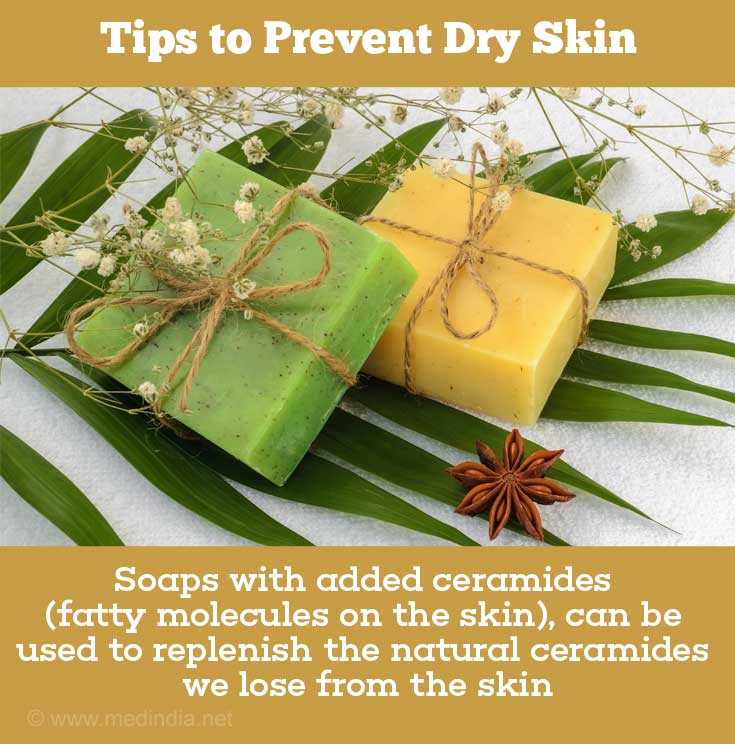
6. Cleansers and Toners for the Face: Avoid applying too much pressure on facial skin when using toners and cleansers. Sensitive skin can get inflamed and irritated with too much scrubbing, resulting in excess dryness.
7. Damage from sun’s rays: Regular use of a sunscreen with SPF 30 can prevent damage to the skin from sun’s rays. Dressing appropriately during winter and summer provides the right protection to the skin. In winter, one must dress up in layers to avoid excess perspiration and buildup of heat, which may cause skin irritation. Chapped lips develop during dry spells in the weather. Lip balms with SPF 15, and covering the face with a scarf when stepping outdoors can protect lips.
8. Shaving with a razor: Men should ideally shave after a shower. The hair is softer and can be cut easily with a razor. Shaving removes essential oils from the skin. Using a shaving gel or cream prevents the skin from drying out, and provides moisture to the skin.
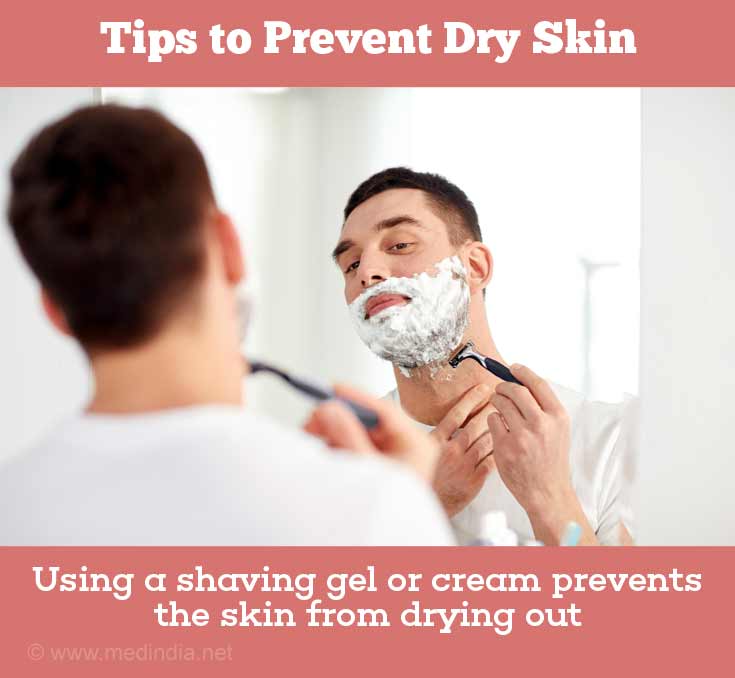
9. Unscented laundry detergent: Washing clothes with fragrance-free detergents avoids contact of the skin with irritant fragrances. Avoiding fabric-softeners also helps improve skin contact with the fabric. This is essential to avoid dry, itchy skin in children.
10. Non-scarring acne: Children with non-scarring acne can be treated with benzoyl peroxide, an over-the-counter medication. However, if the condition persists, they need to be seen by a dermatologist.
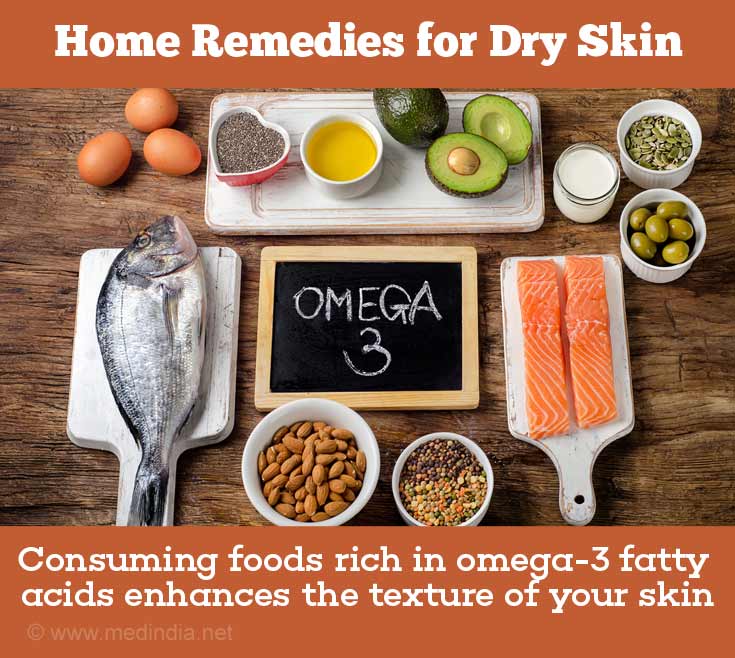
Home Remedies for Dry Skin care
1. Oil: Use of fragrance-free oils such as petroleum jelly, mineral oil, vegetable shortening, provide protection from dry skin temporarily. Moderate use of these oils is suggested, to avoid the greasy effect.
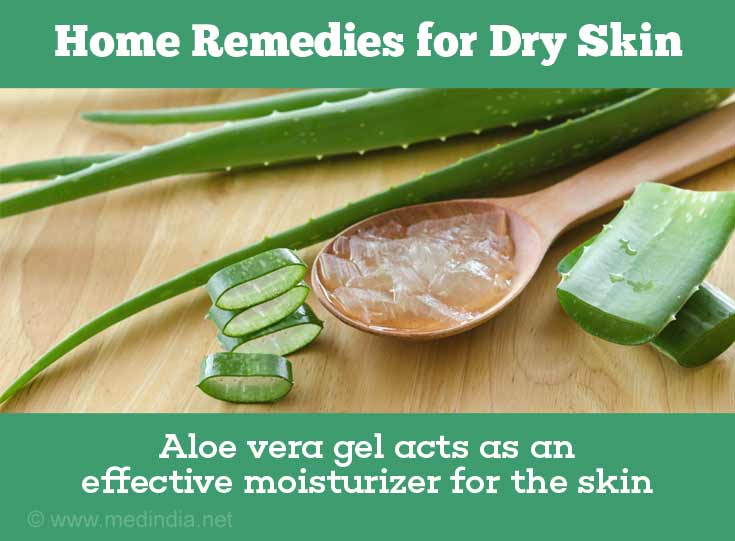
2. Vitamins: A daily dose of 100 mg vitamin B-complex containing riboflavin, pantothenic acid, and thiamine prevents dry skin. Similarly, 15 mg zinc and 15 mg beta-carotene are also recommended.
3. Omega-3 fatty acids: Consuming foods rich in omega-3 fatty acids enhances the texture of the skin. Avocado, walnuts, fish, flaxseed oil are a rich source of omega-3 fatty acids. Cold-water fish are high in omega-3 fatty acids. Avocado pulp, when applied on the face, acts as a face mask and is rich in vitamin E.

4. Epsom salts and dried Seaweed: Soaking in bathwater filled with Epsom salts softens the skin and removes dry cells. Dried seaweed soaked in water also enhances the softening effect on the skin.
5. Aloe vera gel: Gel obtained from the aloe vera leaf acts as an effective skin moisturizer. One can obtain the gel by cutting open the leaf and scooping the gel out.

6. A milk bath: Bathing in milk locks in the skin’s moisture. Lactic acid exfoliates dead cells from the skin. Place a cloth moistened with milk on any dry patch of skin and leave for ~5 minutes. Wash off gently to avoid loss of the moisturizing effect of milk.





